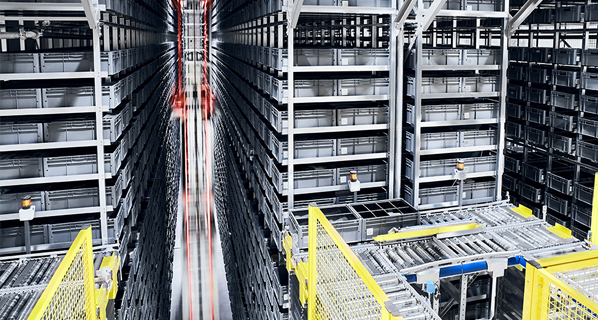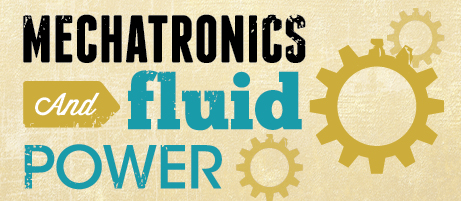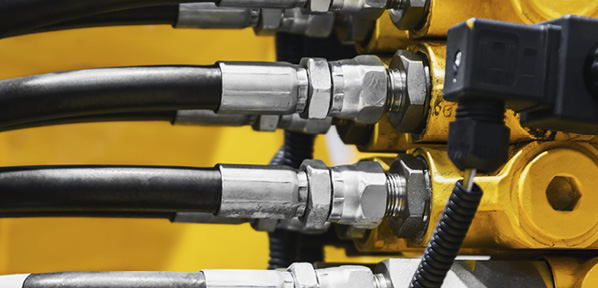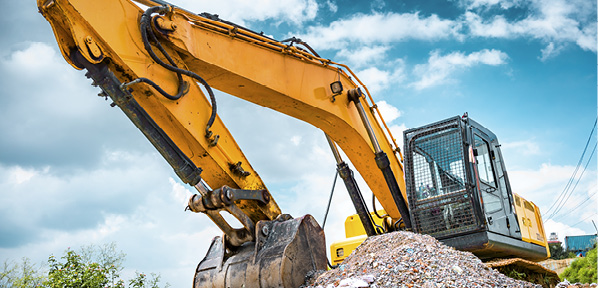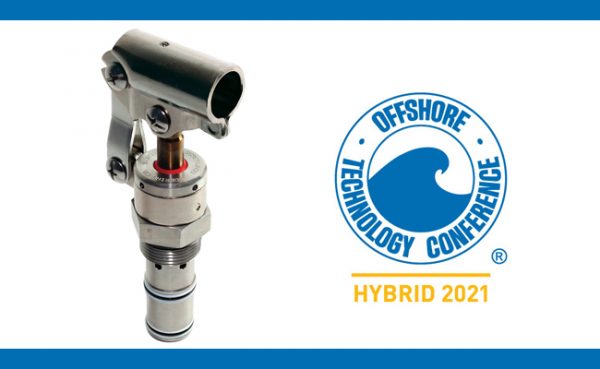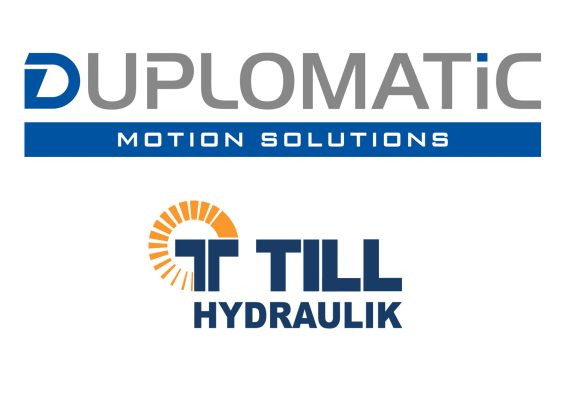Carry On: Fluid Power Keeps Pace with Material Handling
By Wendy Wu, Product Manager Hydraulic Hose & Couplings, Industrial Europe, Gates.
Material handling takes place at every stage of the supply chain. It involves the movement, storage, protection, and control of raw materials and finished goods. Fluid power is a close partner with material handling. Fluid power systems are often used for advanced handling applications involving complex sequences of motion control. That control allows for mechanical tasks such as rotations, lifts, turns, and conveyer operations, or extremely difficult tasks, like tunnel excavation.
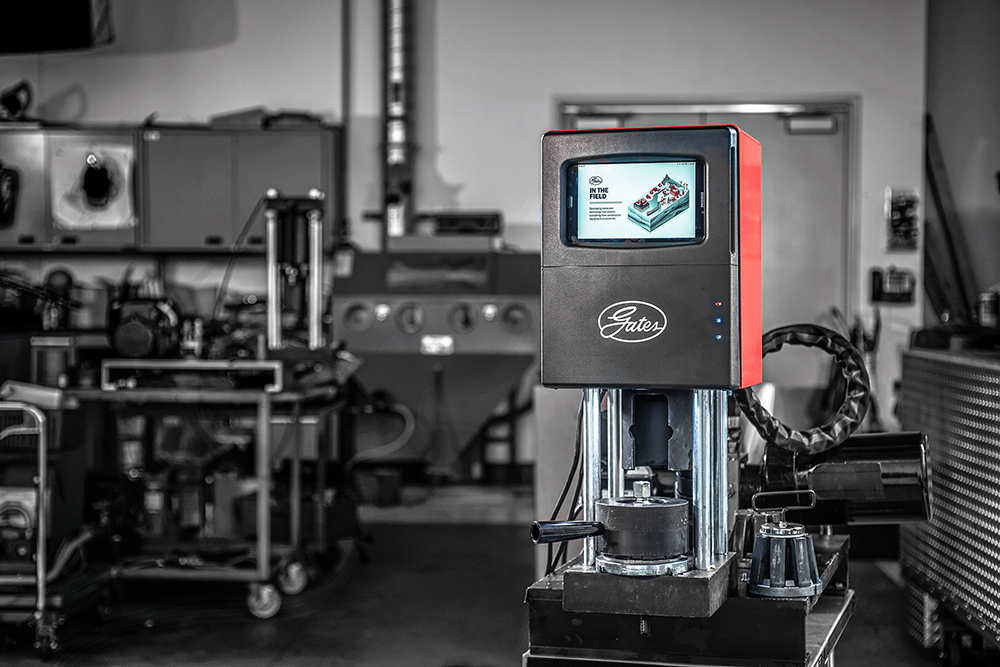
Gates’ GC20 crimper offers real-time cloud connectivity.
Optimizing material handling and improving supply chain efficiency have been constant challenges, but their scope is shifting considerably. Acceleration of e-commerce adoption on a larger scale, increased customer expectations, the urgency of a green transition, and unexpected disruption of the supply chain ecosystem put additional pressure on both suppliers and buyers. Innovation is more critical than ever in supply chain management – and by extension, materials handling – for building resilience, tackling long-term challenges, and contributing to global CO2 emissions reduction targets.
Historically, material handling was not an industry that came to mind when people thought of the disruption or adoption of technologies. Now it’s a very dynamic field.
What are the focus areas and priorities for keeping up with the changing technology of the material handling industry and contributing to its future developments? The answer is key for fluid power companies mapping their own innovation journey, as well as for equipment manufacturers choosing the right supplier. This article discusses major success factors of companies taking on challenges, grabbing opportunities, and thriving in new-age material handling.
Material handling automation
The speed of the material handling industry’s embrace of automation and emerging technologies in recent years has been astonishing, although it varies among subsegments. Automation technology is advancing fast and creating disruptive change in material handling for product manufacturers, retail businesses, e-commerce players, and end customers. With automated conveyors, guided vehicles, and storage and retrieval systems, along with tools like warehouse cranes, goods movement can be almost entirely automated. Furthermore, the advent of artificial intelligence and the Internet of Things have paved the way for a new era of robotic material handling.
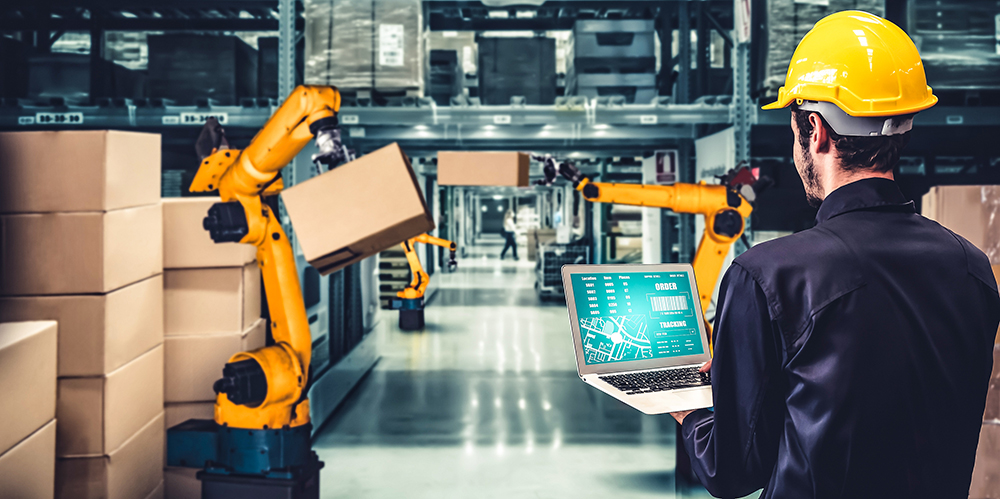
A human-robot interaction environment requires new health and safety measures.
Industrial automation is not a new concept, and fluid power has several features that help automate manufacturing operations. Fluid power equipment can maintain constant and steady pressure, avoiding the overheating or failure of electric motors when exerting continuous force. This steady pressure permits the smooth motion of mechanical arms for functions such as lifting and holding heavy objects or gripping an object with a controllable force. Besides meeting technical requirements, fluid power is the preferred solution in many automation applications, especially when it is more economical than electrical power.
Digital transformation means more than adding automation. Material handling is linked with advanced technologies such as self-driving, blockchain, and AI. Digital technologies are reinventing equipment, elevating it to the next level of user experience, safety, and efficiency.
The industry-first Gates GC20 crimper, for example, is supported by the Gates Cortex Intelligence automation platform. It offers real-time cloud connectivity and system integration, allowing operators of any skill level to intuitively crimp assemblies safely and error-free. Regardless of debates about the negative effects of digitalization, we are in a digitized economy and business environment. Digital transformation is of strategic importance to leading fluid power manufacturers and players diving into new segments.
A ‘culture of innovation’
The remarkable shift toward increased automation and digitization of material handling requires an accelerated adoption of technologies and adaptation to the trend. Introducing, implementing, and absorbing rapid changes in technologies can be challenging and complex. During the innovation journey, companies can fall behind simply because they do not fully understand the trend, they are reluctant to move, or they lack a system to support creativity.
The driving force is a culture of innovation. It encourages creative solutions for meeting customer needs and secures the continuous innovation of products, processes, and services.
For example, Gates Corporation has historically been first-to-market with innovations, including the M3K constant-pressure hydraulic hose and Quick-Lok threadless snap-in hydraulic couplings. This type of innovation culture leads people to challenge the limits, proved by the recent X-Series hydraulic innovations from Gates, featuring the MXT and MXG lines. In a disruptive age, every company needs to be a truly innovative solution provider. This is essential not only for business growth but also for surviving the transformation.
Material handling capability is a focal point for operations efficiency, supply chain optimization, and manufacturing productivity. Highly automated material handling systems significantly improve process efficiency. Major benefits also lie in their scalability and accuracy. They can be programmed to handle multiple tasks simultaneously, mitigating human mistakes and errors. However, system reliability is crucial to fully realize those benefits. Automated systems, in turn, have the ability to collect accurate data of operations and working conditions. This benefits new process and model implementation to improve system reliability, such as proactive maintenance service, which largely depends on condition-based issue prediction and data-driven activity.
Efficiency and reliability are inseparable because one requires the other for companies to increase profit and improve productivity. For components suppliers or producers of fluid power equipment, both efficiency and reliability need to be considered when it comes to equipment development and optimization. Innovation must be compatible with reliability, helping to eliminate or greatly reduce any risk for customers who are early users of innovative practices.
Fluid power applications can impact efficiency and reliability in several ways. To illustrate, consider how the Gates MXG 5K hose contributes to system competency and dependability. It is 25% more flexible than legacy hydraulic hoses. A more flexible hose makes it easier to get a flush mount at the manifold during installation, which reduces the risk of hydraulic fluid leaks. In dynamic applications, more flexibility means less power goes into moving the hose, so more power can be used for actual work. Tested to 1 million impulse cycles, the MXG 5K comes with an XtraTuff Plus cover that is both abrasion- and ozone-resistant, delivering long-lasting performance and reliability on the inside and the outside.
Most original equipment manufacturers find a simple solution to reduce downtime, mitigate risks, and tackle future uncertainty to increase the strength and longevity of the system. Premium-quality materials often equate to long-term durability and life. Selecting premium products is an effective way to attain product reliability and eliminate downtime in the field. High quality doesn’t mean high cost. Companies need to carefully evaluate the total cost of ownership, factoring in the original purchase price of the component, the installation time and effort, plus any maintenance costs during the operational life.
Long-term value
Mechanical reliability relies heavily on materials science and engineering, plus operating conditions and environment. When fluid power components – fittings, hose, and tubing for hydraulic or pneumatic systems – all come from the same manufacturer, it hedges against the risk of shutdown caused by incompatible components. The Gates MXT wire braid hose and Gates MegaCrimp couplings are qualified to work together as matched systems. When assembled per Gates specifications, they are warrantied to exceed 600,000 impulse cycles, which is more than three times the industry standard. A Gates customer in Malaysia faced a leaking problem in its logistics operations every two months due to mix-and-match hose and couplings. The company resolved the issue by selecting and using the Gates MXT series and validated couplings. The Gates engineering process pays strict attention to minimizing the number of components, which reduces the number of leak paths and offers optimal longevity, efficiency, and reliability.
While efficiency and reliability improvements are primary focuses for business growth, to increase long-term business value sustainability is unignorable. It is of special concern today. In the context of business uncertainty, it raises new challenges. Every market has experienced a surge in energy prices due to rebounding demand after the COVID-19 pandemic. Global supply chains are expected to struggle amid constant volatility, and it is hard to predict when the backlog will end. Investment for establishing green supply chain or material handling systems undoubtedly creates value in the long term.
Material handling systems consume substantial amounts of energy over time. Electric consumption due to direct movements of products or materials by material handling is a macro-category in logistics chains. Obtaining and transporting energy is increasingly expensive. Energy savings are a strategic factor for many businesses, so the features of automated and robotic equipment they desire include energy efficiency and compact size.
In terms of energy conversion, pneumatics and hydraulics are efficient solutions for a number of applications. Converting the energy of compressed air into motion, pneumatic actuators are highly efficient sources of motion control. Pneumatic control systems are economical and can be advantageously applied to other forms of power. In hydraulics systems, pressurized fluids are transmitted over long distances and through complex machine configurations with little loss in power. An important contributor to sustainability improvement is an increased system life, reducing the impact of production and decommissioning.
The leading trend in fluid power machinery is continuous improvement in product flexibility, compactness, and weight. Hydraulic hoses are a shining example; high flexibility helps achieve high efficiency, allowing for shorter assembly time and easier routing during installation. As examples, Gates MXT hoses (with braided high-tensile steel wire reinforcement) and the recently launched Gates MXG series hoses (with patented Xpiral woven spiral technology) are remarkably more lightweight – for improved fuel economy and longer time in the field before refilling – extremely more flexible, and much more compact compared to their premium legacy equivalents.
Sustainability dynamics
Smart material handling enables automated procedures that employ less energy, provide real-time operational visibility, and turn data into actionable insights. There is no denying that using renewable energy in industry and power generation is a trend, but this transition will likely take some time. So the quickest way to tackle an energy crisis is with energy savings, where the adoption of lighter components of equipment can play a big role. Forklifts are one of the most widely used pieces of equipment for moving and managing materials in a warehouse and are typically outfitted with over 10 meters (32 feet) of hoses. Large scissor lifts can have hundreds of meters of hydraulic lines on one application. Weight reduction brings considerable energy-saving potential and is important for building energy-efficient hydraulic system.
Every industry’s sustainable development relies on ecological sustainability. Fluid power is no different. There is still a lot to be done to accelerate the transition toward sustainability dynamics. Steps in that direction include the formation of standards and principles in the design of green fluid power systems and advocating for environmentally safe fluids. Players with far-reaching vision have invested more in products that lessen environmental impacts, mainly by reducing noise emissions, heat generation, and oil leaks and spills from fluid power applications.
Gates was an early adopter of environmentally friendly materials in products. In 2003, the Gates EFG hose series was launched. “EF” stands for EnviroFluid, indicating the product is compatible with even the most aggressive biodegradable hydraulic fluids, such as synthetic esters, polyglycols, and vegetable oils. Key players in fluid power go beyond product designs to implement energy-saving manufacturing practices that reduce their ecological footprint. Gates facilities in Belgium and Thailand employ solar energy to lower carbon footprints. The Belgium facility is 100% solar powered and generates up to 739 kilowatts peak (kWp). The Thailand facility achieved an energy savings of 24,336 kilowatt hours (kWh) per year.
Last but not least, don’t forget about people. As companies progress to an era of highly automated manufacturing and distribution, the journey can be sustainable only when we prioritize people every step along the way. The design of fluid power systems, whether in manual or automated form, must consider improved ergonomics and mitigate the new health and safety risks for people who interact with robots in so-called cobotic environments. Highlighting attention paid to ergonomics during the design process, Gates fluid power products are lighter weight and more flexible for ease of installation and to help reduce stress and strain when handling.
Fluid power, material handling, and supply chain share key benchmarks: efficiency, reliability, and sustainability. Driven by components manufacturers, equipment and machinery OEMs, and industry organizations, fluid power innovation is essential for companies to cope with supply chain issues and win in the new reality. Advancements in material handling offer opportunities fluid power’s positive impact. Along with emerging technologies reshaping virtually every industry, material handling has fast become the objective for a steady, nonstop flow of goods, which prompts fluid power to accelerate along its road to innovation.
Innovation is a journey, not a guarantee for success. A truly innovative culture leads to sound strategy and a well-developed actions framework. Companies must identify their focus areas, coordinate efforts, and leverage sources to hurdle current obstacles and be ready to respond to future challenges.

